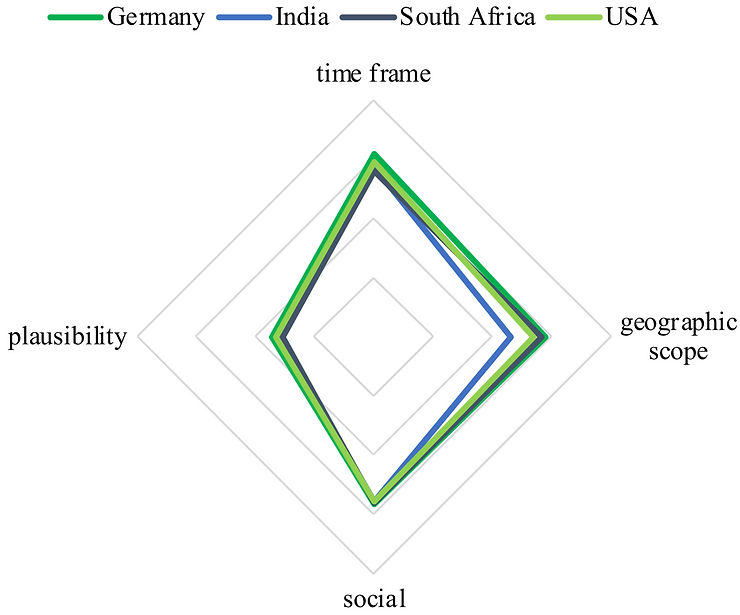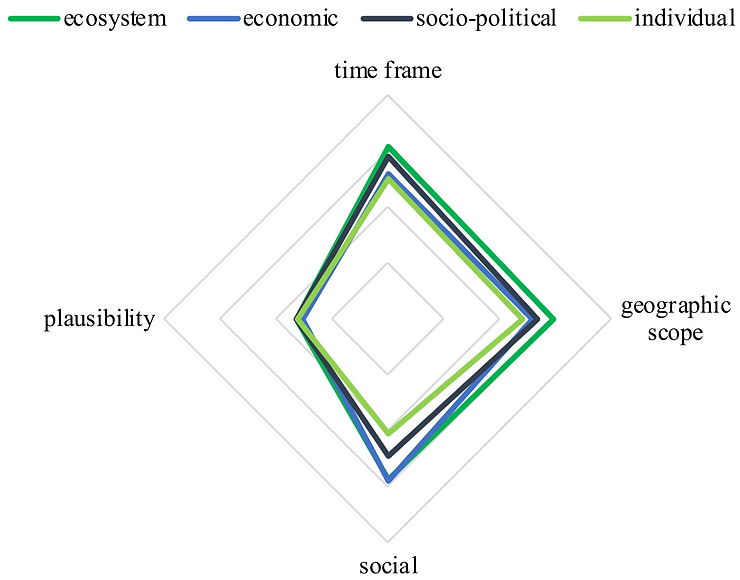Distant Horizons: Understanding Climate Futures in Global Media Narratives
By Mahima Samraik
Title: Not here, not now, not me: how distant are climate futures represented in journalistic reporting across four countries?
Author(s) and Year: Lars Guenther and Michael Brüggemann, 2023
Journal: Journal Of Science Communication open access, JCOM 2023, vol(5); open access
TL;DR: This study analyzed media coverage of future climate change scenarios in four countries. The portrayal of different scenarios impacted their perceived psychological distance, influencing how readers engage with climate futures.
It found that negative climate/ecosystem future scenarios were portrayed as the most distant, often with unclear, distant time frames and global focus. On the other hand, economic and socio-political future scenarios appeared somewhat less distant and involved more local elements.
Why I chose this paper: I selected this paper due to the prevalent skepticism and limited awareness surrounding climate change in everyday discussions. The media in our developing nation continues to downplay the severity of climate change, leaving its future implications looming large and not being treated with the seriousness it deserves. Therefore, I was drawn to explore whether perceptions and knowledge about climate change differ across geographical locations.
Amidst dinner table debates, my family’s skeptical voices echo a familiar refrain:
The climate crisis is old news, doesn’t affect us directly, and if so, it’s in the distant future! Why worry now?
This sentiment is bolstered by the media’s climate skepticism, which resists change. In a world grappling with the effects of climate change, the media plays a pivotal role in shaping public understanding and action. However, there’s a critical gap in our knowledge—how do media reports influence our perception of possible climate futures? What motivates media outlets to cover climate change the way they do?
Climate change has garnered varying levels of concern among the public and policymakers worldwide. One key reason for this disparity lies in the perceived psychological distance of climate change impacts, which often seemremote and uncertain.
This study delves into the representation of ‘climate futures’ in journalistic media across four countries, exploring their degree of psychological distance. By comparing these representations and the types of scenarios covered, Guenther and Brüggemann aim to offer a comprehensive understanding of how the media shapes perceptions of climate change.
Methods
The study comprehensively analyzed media coverage of climate change in four diverse countries: Germany, the United States, India, and South Africa. Researchers selected these nations based on various criteria, including diverse climate change concerns, global impact, and democratic and media systems. The dataset comprised 56,394 articles from 11 to 15 media outlets in each country, covering the period from January 2017 to December 2020. This time frame was chosen due to its high visibility on climate change coverage.
A dictionary-derivation approach employed in a prior study by the authors was sought to identify the articles containing climate change-related future scenarios. The process entailed qualitatively coding and extracting climate-related text from 700 articles across countries, utilizing common words from 1,000 English and 2,000 German articles. Two dictionaries with 191 English and 210 German words were used to assign relevance scores, ultimately ranking articles by country. A total of 1,010 articles were manually coded, guided by a codebook that included formal and content-related categories. This codebook was then employed to evaluate climate future scenarios in the articles, encompassing climate/ecosystem aspects (such as rising temperatures and increased extreme weather events), economic considerations (including companies, industry sectors, and the national economy), socio-political factors (covering social inequality, migration, and the political system), and individual scenarios (encompassing habits and lifestyles).
Each scenario underwent assessments based on psychological distance factors, including time frame (near or distant future), scope (regional or global impact), associated actors (scientists or citizens), and plausibility (likely or unlikely). The codebook integrated evaluations (none, negative, ambivalent, positive) for each scenario alongside categories referencing psychological distance to comprehensively assess perceptions of distance in the identified scenarios.
The Results
The study found remarkable consistency in how journalistic media from different countries reported on climate futures. Climate/ecosystem scenarios were prevalent in coverage from Germany, India, South Africa, and the United States. However, India and South Africa featured economic and socio-political scenarios slightly more frequently than the US and Germany.
The countries showed slight variations in the time frame, with German and US media tending towards more temporal distance compared to India and South Africa. Regarding geographic scope, German media often depicted global scenarios, while US media frequently involved citizens but also highlighted scientific perspectives, which were socially distant. Overall, Figure 1 indicates minimal differences between countries in reporting climate futures’ plausibility, yet Indian and South African media leaned slightly towards assessing them as more likely.

Although media coverage showed consistent levels of distance, the type of climate future scenario influenced the perceived level of distance. Despite minor variations, media in all countries perceived climate futures as likely, with South African media showing less negativity and US media incorporating citizen perspectives more frequently.
The study also found that the portrayal of climate futures in the media varied depending on the type of scenario covered, which in turn impacted their perceived distance. As seen in Figure 2, Climate/ecosystem scenarios, which often included negative elements like extreme weather events, were depicted as the most distant. They had unclear and distant timeframes, typically spanning 50 years or more, and mainly revolved around global events. These scenarios were generally seen as likely and prominently featured by scientists.
On the other hand, economic scenarios, which covered both positive and negative aspects, seemed somewhat less distant. They had time frames ranging from 5 to 30 years, a combination of local and global elements, and were often considered likely or very likely. Socio-political scenarios, despite their negative evaluations and global focus, more frequently involve citizens, making them appear less distant. Although less covered, individual scenarios related to local or national matters were considered very likely and closely connected with everyday people.

Impact
This study sheds light on the representation of climate futures in journalistic media and the potential impact on public perception and engagement. The consistent global reporting on climate/ecosystem scenarios highlights the urgency for media to diversify their coverage to resonate with various audiences. The findings emphasize the importance of adjusting the temporal, spatial, and social dimensions of (psychological) distance in reporting, irrespective of the type of scenario. This can be utilized to make climate change more relevant and actionable for the public.
Furthermore, the underrepresentation of individual scenarios indicates a significant opportunity for science communicators and journalists. By incorporating scenarios that relate to individual habits, lifestyles, and immediate concerns, media can bridge the gap between climate change and everyday life experiences, potentially spurring more active engagement from the public.
Figures used under CC BY 4.0
Edited by: Scout Barker and Kay McCallum
Cover image credit: Unsplash/Markus Spiske

